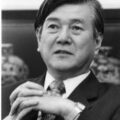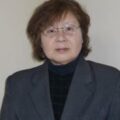The New Collected Works of Seki Takakazu Reveals His True Image
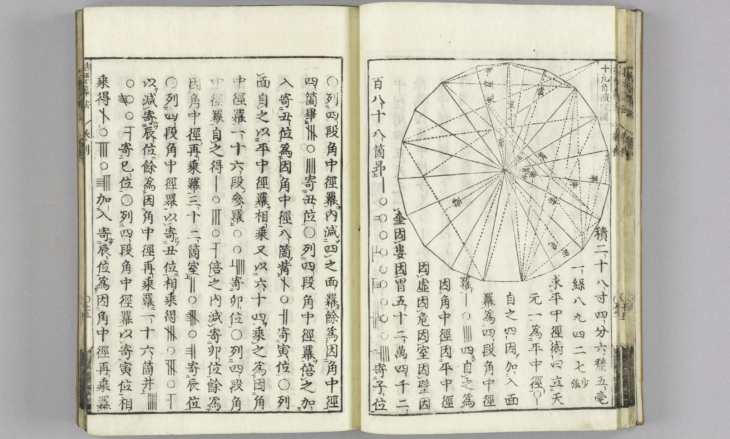
The Katsuyo Sanpo (compendium of mathematics), a posthumous collection of a Wasan scholar (Japanese mathematician) Seki Takakazu (?–1708) ‘s works, published by the disciples of Seki in 1712. Photo: Volume 4, Book 2 of the book, NDL Digital Collections, National Diet Library
Seki Takakazu (also known as Seki Kowa, ?–1708) is known as a Japanese mathematician of the Edo period (1603–1867) who studied traditional Chinese mathematics and made great advances in Wasan (native Japanese mathematics). He was also the first mathematician in the Sinosphere (China, Japan, Korea, Vietnam) to emphasize the importance of general theory. In traditional Chinese mathematics, which Seki inherited, there was only one way to describe an unknown in an equation. However, he devised a way to describe equations with many unknowns, and completed the general theory of eliminating unknowns in high-order simultaneous equations, the theory of resultants, which had introduced determinants independently of Gottfried Wilhelm Leibniz (1646–1716), before Western mathematics. He also made equations, which had previously been seen only as tools for solving problems, the subject of mathematical research, completing a numerical solution method for equations using assembly division before Paolo Ruffini (1765–1822) and William George Horner (1786–1837), and attempting to construct a theory of equations. He also constructed interpolation, introduced the Seki-Bernoulli number independent of the Bernoulli number (Daniel Bernoulli, 1700–82) to find the sum of powers formula, completed a general method for solving simultaneous congruence equations in number theory, and invented the acceleration method equivalent to today’s Aitken’s delta-square method in numerical computation, applying them to the calculation of pi, the length of a circular arc, and the volume of a sphere. Seki Takakazu Zenshu (Takakazu Seki’s Collected Works, Edited with Explanations) was published in Japan in 1974, but subsequent re-examination of related historical materials continued in the 1990s, and new materials continued to be unearthed and rediscovered. As a result, Seki Takakazu Zenshu (The Complete Works of Seki Takakazu) (3 volumes, Iwanami Shoten) was planned on the basis of new findings and was published in 2023.
This article is a translation, after re-editing, of the roundtable discussion planned to commemorate this. (Hashimoto)
Ueno Kenji (Yokkaichi University),
Sato Ken’ichi (The University of Electro-Communications),
Hashimoto Mari (Odawara Art Foundation)
Ueno Kenji: In the history of Wasan (Japanese mathematics) to date, there have been discussions about what Seki did, and whether it was earlier or later than European mathematics, or whether it was done independently, but there have been few discussions about Seki Takakazu’s mathematics as a whole. Wasan is traditional Japanese mathematics that has inherited traditions from China, but I would like people to pay more attention to the fact that Seki “dramatically changed the way mathematics is done.” Unfortunately, it is also tragic that Seki’s view of mathematics was never understood by anyone after him.
Hashimoto Mari: Even though people say that Seki’s Wasan is amazing, there are not many people who can explain “how amazing it is.”
Ueno: It is often said that Seki is extraordinary in his individual mathematical achievements. But Seki also emphasized the importance of general theory and tried to change the nature of mathematics itself.
Hashimoto: Before we talk about that, can you tell us what Wasan is in the first place?
Ueno: Wasan is basically a form of mathematics that originated in ancient China. It was introduced to Japan in the Nara period (710–794). We don’t know much about the situation in the Middle Ages, but it entered a new period of development in the early modern period [Edo period]. Now, there is a book called Jiuzhang Suanshu (The Nine Chapters on the Mathematical Art, 1999, Oxford University Press) that was written in China around the turn of the current era (CE). As the name suggests, it is a collection of problems with nine chapters, and the answers and solutions are written down. However, it does not explain why the answers are correct.
Hashimoto: Is there no description of the proofing process?
Ueno: In China, where ancient times are considered ideal, the Jiuzhang Suanshu became established as a style of mathematics book. For example, the eighth chapter of the Jiuzhang Suanshu is titled “Equation,” which is the origin of the current name “equation.” This chapter is about linear simultaneous equations (LSEs). Since it is not possible to calculate with Chinese numbers, they used chou suan (counting rods). Using counting rods, people were able to properly calculate LSE coefficients, or what we would now call linear algebra matrix computation, 2000 years ago.
But strangely enough, this did not become the theory of matrix theory or LSE. Traditional Chinese mathematics was just saying, “This is how to solve this problem.” Later, in the 12th and 13th centuries, Tianyuan Shu (Tianyuan Technique) appeared, which describes equations and solves them. There is no explanation of what Tianyuan Shu is. There is a problem, there is a way to solve it, and the answer suddenly appears. In other words, there was no “general theory,” only “algorithms to solve individual problems.” This is an important feature of traditional Chinese mathematics.
Sato Ken’ichi: Korea is the same. Mathematical books in the Sinosphere are basically written in the form of “questions and answers.” This is the top-down cultural exchange characteristic of a bureaucratic society, and is the style of manuals and collections of rules called “questions and answers” (superiors answer questions from the field). Arithmetic in ancient China was performed by administrative officials with such a culture. The remnants of it were preserved, and in the end it remained individual and practical. Perhaps they did not feel the need for more.
Hashimoto: How was mathematics brought from China treated in ancient Japan?
Ueno: In the 8th century, Japan’s ancient ritsuryo legal system stipulated that san hakase (a position teaching mathematics and raising mathematicians) be placed in civil service training institutions to teach arithmetic. At that time, Jiuzhang Suanshu and even more difficult mathematics were also introduced from China.
Hashimoto: And then what about mathematical techniques that can be used to design cities, construct buildings, calculate calendars, and so on?
Sato: Those techniques remained in the form of “routine work” within expert groups. That began to change around the 16th century. To put it in a different context to Professor Ueno’s explanation, the characteristic of Wasan from the 16th century onwards was that it was linked to global economic activities after the Age of Discovery. In the 16th century, large amounts of silver from Iwami Ginzan (silver mine) in Oda City, Shimane Prefecture and Potosí Silver Mine in South America (present-day Bolivia) began to flow into China, and the Chinese economy boomed, and abacus calculation techniques were also needed. Abacus calculations were imported to Japan, and from there Japanese arithmetic was restarted. It is a product of the Age of Discovery and the Age of Commerce. Then the Tianyuan Shu mentioned earlier was rediscovered, and Seki Takakazu appeared.
Hashimoto: The members of the Editorial Committee who compiled the Complete Works agreed that it was strange that Seki Takakazu suddenly appeared as the only extraordinary person.
Ueno: Mathematics before Seki was at a level equivalent to that of middle and high school students today. However, Seki raised Japanese mathematics to the level of researchers in one leap.
Hashimoto: How did Seki become known as a Wasan scholar? Did he have a teacher to mentor him?
Ueno: That’s also unclear. As I said, Chinese mathematics is an algorithm, a technique for solving problems. There are equations, but Chinese mathematics was not mathematics as a subject of research, but merely a means of solving problems. Seki made it a research subject of mathematics.
Sato: The perspective is to study the equations themselves.
Ueno: Seki was the first person in the Sinosphere to study “the equations themselves.” Given that, I get the feeling that he’s pretty much self-taught.
Hashimoto: So what was Seki’s “general theory”?
Ueno: For example, there are equations that require two unknowns to solve a problem. In that case, you can eliminate one of the unknowns and derive the equation to the answer. If you have a problem, you can create a special equation and specifically reduce the variables, and you’ll get the answer. All the mathematicians before Seki were satisfied with that.
Hashimoto: They think, “I solved it!”
Ueno: But Seki said, “I’ll find a way to solve it for any case.” The epilogue[1] to Hatsubi Sanpo Endai Genkai (by Takebe Katahiro [1664–1739], 1685) (a manual for Hatsubi Sanpo [Solutions to algebraic equations] by Seki Takakazu, 1674) says the following. “For what purpose one studies mathematics?” “One learns the art of solving all problems, not only difficult but easy ones.” The fact that he wrote “easy” in addition to “difficult” is very typical of Seki. In short, he believed that there was a general way to solve every problem.
Sato: This is related to Wasan as a whole, but Seki’s great achievements are not only the construction of general theory, but also the basic kigoho, or mathematical notation (boshoho, side writing method). With the new notation as a foundation, the general theory could be developed from there. I began to think that Seki’s mathematical notation was important after the second half of the Edo period. This was because it was known that Ino Tadataka (1745–1818), who used precise surveying techniques to create detailed maps of Japan, and the artillery personnel of the shogunate at the end of the Edo period used the boshoho created by Seki. The fact that Seki’s mathematical notation had permeated the engineering and mathematical sciences of the time must have made it easier for them to accept new knowledge. This is the only thing that everyone inherited from Seki.
Hashimoto: Were any of Seki’s other achievements not passed on?
Sato: After that, the situation continued for a while, with those who were employed by the Tenmongata (Astronomy Agency) of the Edo Shogunate working as both Wasan and astronomer. For example, with regard to the previous discussion of “What is Wasan?,” the Chongzhen-lishu (Treatise on the Calendar in the Name of Emperor Chongzhen), completed at the end of the Ming Dynasty (1368–1644), was based entirely on European astronomy. After the eighth shogun, Tokugawa Yoshimune (reigned 1716–1745), such academic books flooded into Japan, and subsequent generations must have had their hands full absorbing and digesting them.
Hashimoto: Was there any movement among Wasan scholars in the latter half of the Edo period to inherit and develop Seki’s mathematics or to study Seki’s achievements?
Sato: In the early 19th century, there was a year of commemoration for the 100th anniversary of Seki’s death. It seems that Wasan scholars were very active at that time. However, there was no review of the content of mathematics. Wasan certainly inherited the tradition of Chinese mathematics from a macro perspective, but he did not systematically aim to return to the tradition or look back into the past to reconstruct problems from there. As I said, new problems were coming in all the time from overseas. The reality at that time was that they could only keep up with them, which was different from the European mathematical tradition. Fermat’s Last Theorem (published in 1640) began when Fermat wrote “did not write it down because the margins were too narrow to fit it [the proof] in” while rereading the Arithmetica of Diophantus of Alexandria (born c. CE 200–c. 214; died c. CE 284–c. 298) from ancient Rome [around the 3rd century]. The transition from Euclidean geometry [around the 3rd century BCE] to non-Euclidean geometry [in the 19th century] also occurred during the persistent research that had been going on since ancient Greece. Looking at the history of Wasan after Seki in the second half of the Edo period, it seems that there was little time to look back to tradition. Although Seki’s name was often mentioned or there were some minor annotations, there was no attitude fostered among Japanese mathematicians at the time to seriously reexamine his mathematics.
Hashimoto: If Japan had not closed its borders to the outside world, would it have been possible for something similar to Seki’s mathematics to have been created earlier, or for Seki’s mathematics to have had an impact on China or Europe?
Ueno: If it had been conveyed, it would have been quite interesting. At the very least, Seki’s theory of Resultants would have been quite shocking.
Sato: It would have been possible if someone had translated it.
Ueno: If a scientist like Matteo Ricci (1552–1610) had come to Japan, it would have been interesting to see what would have happened if he had learned about Seki’s mathematics, even though he lived in a slightly different time period.
Hashimoto: I would love to read science fiction like that. Thank you for today.
This article first appeared in Iwanami Shoten’s web magazine Tane wo Maku (Sowing seeds) (2023.09.27) as “‘Seki Takakazu Zenshu’ Kankokinen ‘Teidan’ Shin Zenshu ga Shimesu Seki Takazu-zo (‘The Complete Works of Seki Takakazu’ Publication Commemoration ‘Roundtable Discussion’: The Image of Seki Takakazu Revealed by the New Complete Works).” With permission from Iwanami Shoten, one of the panelists, Hashimoto Mari, re-edited the Japanese text, and Discuss Japan translated it into English and reprinted it.
“Seki Takakazu Zenshu Publication Commemoration ‘Roundtable Discussion’: The Image of Seki Takakazu Revealed by the New Complete Works” (Part 1 and Part 2)
https://tanemaki.iwanami.co.jp/posts/7438 [Part I in Japanese]
https://tanemaki.iwanami.co.jp/posts/7439 [Part II in Japanese]
[1] Mathematics of Seki Takakzu and His Influence on Japanese Mathematics (https://math-info.criced.tsukuba.ac.jp/museum/TGSW2015/copy_of_ppt_Ueno20150930.pdf)
Keywords
- Seki Takakazu
- Seki Kowa
- Ueno Kenji
- Yokkaichi University
- Sato Ken’ichi
- The University of Electro-Communications
- Hashimoto Mari
- Odawara Art Foundation
- Wazan
- Japanese mathematics
- Chinese mathematics
- mathematician
- Seki-Bernoulli number
- Resultants
- equations
- theory of equations
- algorithms
- Seki Takakazu Zenshu
- Takakazu Seki’s Collected Works
- Jiuzhang Suanshu
- The Nine Chapters on the Mathematical Art
- Tianyuan Shu
- Tianyuan Technique
- Hatsubi Sanpo Endai Genkai
- Takebe Katahiro
- Ino Tadataka
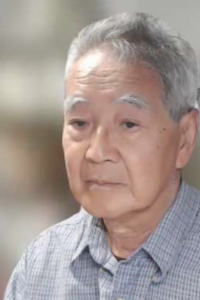 UENO Kenji, Ph.D.
UENO Kenji, Ph.D.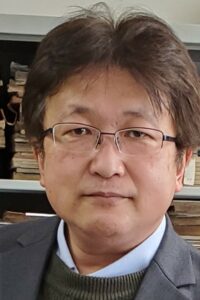 SATO Ken’ichi, Ph.D.
SATO Ken’ichi, Ph.D.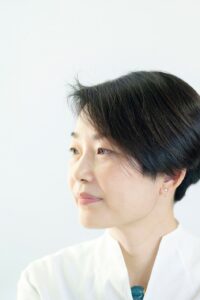 HASHIMOTO Mari
HASHIMOTO Mari
